Time
Time is the ongoing sequence of events taking place. The past, present and future.
We measure time using seconds, minutes, hours, days, weeks, months and years.
Clocks measure time.
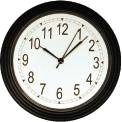
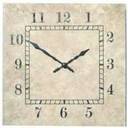
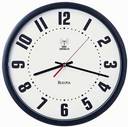
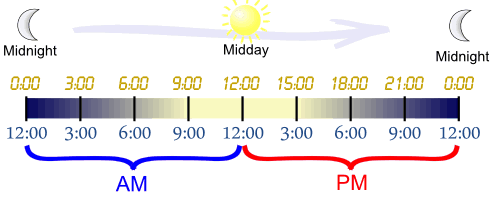
We measure time using seconds, minutes, hours, days, weeks, months and years.
Clocks measure time.
Clocks
In our world we have digital clocks (they have digits like 0,1,2,3) ...
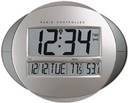
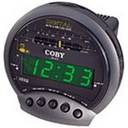




... and analog clocks (they have hands) ...



DIGITAL CLOCKS
Digital Clocks show us the time using numbers, like this:
Hours : Minutes
Examples:
 | 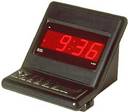 | |
5 Hours and 8 Minutes
|
9 Hours and 36 Minutes
|
CLOCKS WITH HANDS
Clocks can also use hands to show us the Hours and Minutes. We call them "analog" clocks.
The Little Hand shows the Hours:
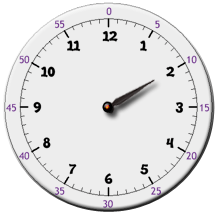 | 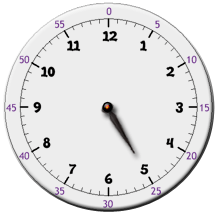 | |
| 2 Hours | 5 Hours |
The Big Hand shows the Minutes:
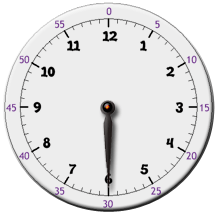 | 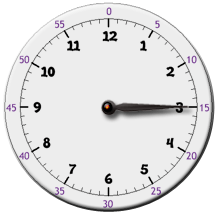 | |
| 30 Minutes or Half-Past | 15 Minutes or Quarter-Past |
Using both the Big Hand and Little Hand lets us know exactly what time it is:
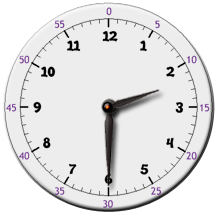 | 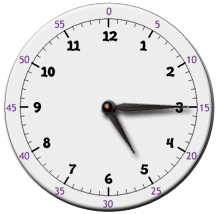 | |
| 2:30 or Half-Past Two | 5:15 or Quarter-Past Five |
Time - AM/PM vs 24 Hour Clock
Normally time is shown as Hours:Minutes
There are 24 Hours in a Day and 60 Minutes in each Hour.
SHOWING THE TIME
There are two main ways to show the time: "24 Hour Clock" or "AM/PM":
24 Hour Clock: the time is shown as how many hours and minutes since midnight.
AM/PM (or "12 Hour Clock"): the day is split into:
- the 12 Hours running from Midnight to Noon (the AM hours), and
- the other 12 Hours running from Noon to Midnight (the PM hours).
Like this (try the slider):
24 Hour
AM/PM
14:00
2:00 PM

AM
|
PM
| |
Ante Meridiem*
Latin for "before midday" |
Post Meridiem*
Latin for "after midday" | |
When:
|
Midnight to Noon
|
Noon to Midnight
|
24 Hour Clock:
|
0:00 to 11:59
|
12:00 to 23:59
|
*Is that spelled "Meridiem" or "Meridian"? See here.
CONVERTING AM/PM TO 24 HOUR CLOCK
Add 12 to any hour after Noon (and subtract 12 for the first hour of the day):
For the first hour of the day (12 Midnight to 12:59 AM), subtract 12 Hours
Examples: 12 Midnight = 0:00, 12:35 AM = 0:35
From 1:00 AM to 12:59 PM, no change
Examples: 11:20 AM = 11:20, 12:30 PM = 12:30
From 1:00 PM to 11:59 PM, add 12 Hours
Examples: 4:45 PM = 16:45, 11:50 PM = 23:50
CONVERTING 24 HOUR CLOCK TO AM/PM
For the first hour of the day (0:00 to 0:59), add 12 Hours, make it "AM"
Examples: 0:10 = 12:10 AM, 0:40 = 12:40 AM
From 1:00 to 11:59, just make it "AM"
Examples: 1:15 = 1:15 AM, 11:25 = 11:25 AM
From 12:00 to 12:59, just make it "PM"
Examples: 12:10 = 12:10 PM, 12:55 = 12:55 PM
From 13:00 to 23:59, subtract 12 Hours, make it "PM"
Examples: 14:55 = 2:55 PM, 23:30 = 11:30 PM
COMPARISON CHART
Here is a side-by-side comparison of the 24 Hour Clock and AM/PM:
Example: on the hour
|
Example: 10 minutes past
| |||
24 Hour Clock
| AM / PM |
24 Hour Clock
| AM / PM | |
| 0:00 | 12 Midnight | 0:10 | 12:10 AM | |
| 1:00 | 1:00 AM | 1:10 | 1:10 AM | |
| 2:00 | 2:00 AM | 2:10 | 2:10 AM | |
| 3:00 | 3:00 AM | 3:10 | 3:10 AM | |
| 4:00 | 4:00 AM | 4:10 | 4:10 AM | |
| 5:00 | 5:00 AM | 5:10 | 5:10 AM | |
| 6:00 | 6:00 AM | 6:10 | 6:10 AM | |
| 7:00 | 7:00 AM | 7:10 | 7:10 AM | |
| 8:00 | 8:00 AM | 8:10 | 8:10 AM | |
| 9:00 | 9:00 AM | 9:10 | 9:10 AM | |
| 10:00 | 10:00 AM | 10:10 | 10:10 AM | |
| 11:00 | 11:00 AM | 11:10 | 11:10 AM | |
| 12:00 | 12 Noon | 12:10 | 12:10 PM | |
| 13:00 | 1:00 PM | 13:10 | 1:10 PM | |
| 14:00 | 2:00 PM | 14:10 | 2:10 PM | |
| 15:00 | 3:00 PM | 15:10 | 3:10 PM | |
| 16:00 | 4:00 PM | 16:10 | 4:10 PM | |
| 17:00 | 5:00 PM | 17:10 | 5:10 PM | |
| 18:00 | 6:00 PM | 18:10 | 6:10 PM | |
| 19:00 | 7:00 PM | 19:10 | 7:10 PM | |
| 20:00 | 8:00 PM | 20:10 | 8:10 PM | |
| 21:00 | 9:00 PM | 21:10 | 9:10 PM | |
| 22:00 | 10:00 PM | 22:10 | 10:10 PM | |
| 23:00 | 11:00 PM | 23:10 | 11:10 PM | |
MIDNIGHT AND NOON
"12 AM" and "12 PM" can cause confusion, so we prefer "12 Midnight" and "12 Noon".
WHAT DAY IS MIDNIGHT?
Midnight has another problem: there is nothing to tell us "is this the beginning or ending of the day".
So, when you see something like "offer ends midnight October 15th" tell them to use one minute before or after so there is no confusion!

No comments:
Post a Comment